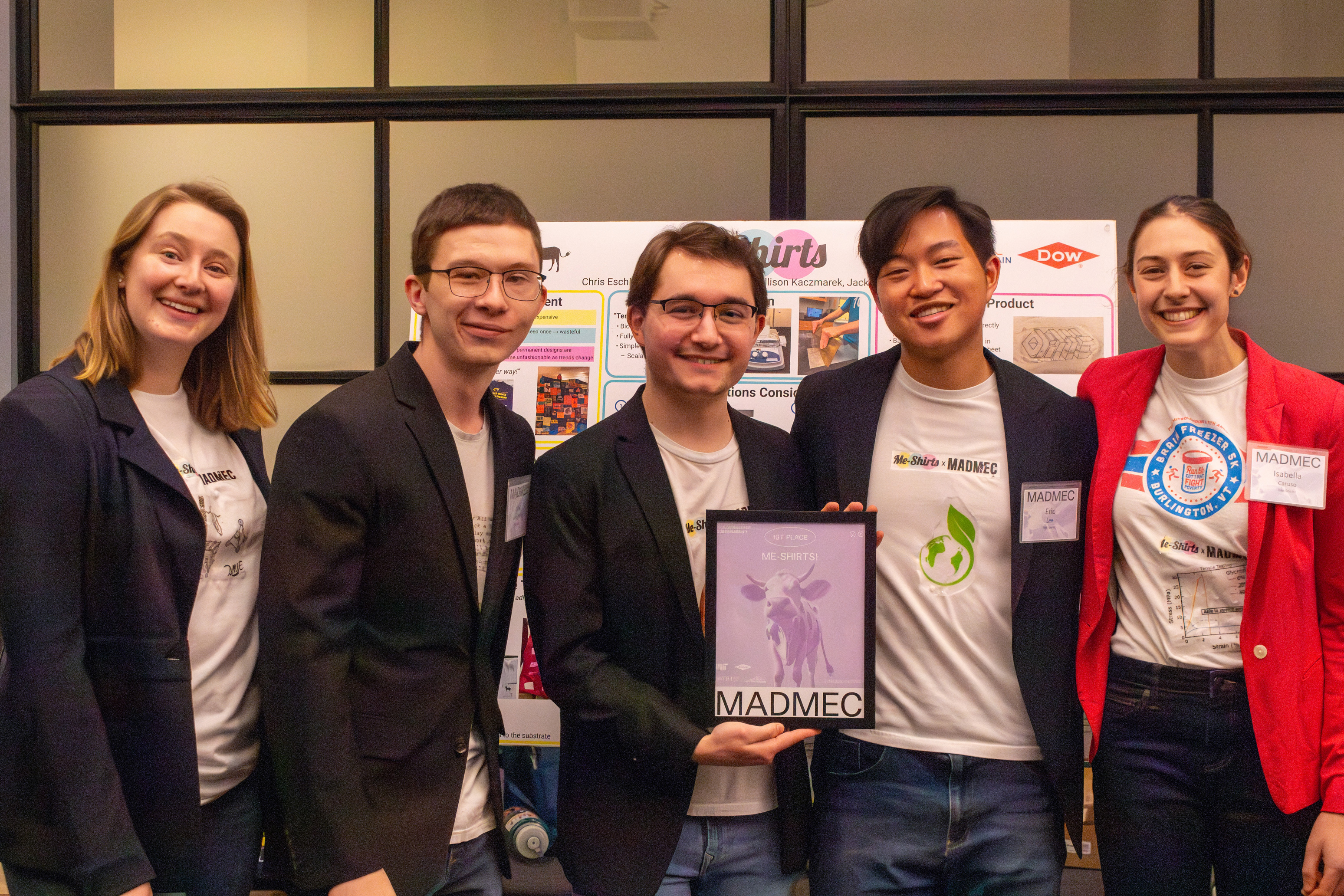
Have you ever gotten a free T-shirt at an event that you never wear? What about a music or sports-themed shirt you wear to one event and then lose interest in entirely? Such one-off T-shirts — and the waste and pollution associated with them — are an unfortunately common part of our society.
But what if you could change the designs on shirts after each use? The winners of this year’s MADMEC competition developed biodegradable “temporary tattoos” for T-shirts to make one-wear clothing more sustainable.
Members of the winning team, called Me-Shirts, got their inspiration from the MADMEC event itself, which ordinarily makes a different T-shirt each year.
“If you think about all the textile waste that’s produced for all these shirts, it’s insane,” team member and PhD candidate Isabella Caruso said in the winning presentation. “The main markets we are trying to address are for one-time T-shirts and custom T-shirts.”
The problem is a big one. According to the team, the custom T-shirt market is a $4.3 billion industry. That doesn’t include trends like fast fashion that contribute to the 17 million tons of textile waste produced each year.
“Our proposed solution is a temporary shirt tattoo made from biodegradable, nontoxic materials,” Caruso explained. “We wanted designs that are fully removable through washing, so that you can wear your T-shirt for your one-time event and then get a nice white T-shirt back afterward.”
The team’s scalable design process mixes three simple ingredients: potato starch, glycerin, and water. The design can be imprinted on the shirt temporarily through ironing.
The Me-Shirt team, which earned $10,000 with the win, plans to continue exploring material combinations to make the design more flexible and easier for people to apply at home. Future iterations could allow users to decide if they want the design to stay on the shirt during washes based on the settings of the washing machine.
Hosted by MIT’s Department of Materials Science and Engineering (DMSE), the competition was the culmination of team projects that began in the fall and included a series of design challenges throughout the semester. Each team received guidance, access to equipment and labs, and up to $1,000 in funding to build and test their prototypes.
“The main goal is that they gained some confidence in their ability to design and build devices and platforms that are different from their normal experiences,” Mike Tarkanian, a senior lecturer in DMSE and coordinator of MADMEC, said at the event. “If it’s a departure from their normal research and coursework activities that’s a win, I think, to make them better engineers.”
The second-place, $6,000 prize went to Alkalyne, which is creating a carbon-neutral polymer for petrochemical production. The company is developing approaches for using electricity and inorganic carbon to generate a high-energy hydrocarbon precursor. If developed using renewable energy, the approach could be used to achieve carbon negative petrochemical production.
“A lot of our research, and a lot of the research around MIT in general, has to do with sustainability, so we wanted to try an angle that we think looks promising but doesn’t seem to be investigated enough,” PhD candidate Christopher Mallia explained.
The third-place prize went to Microbeco, which is exploring the use of microbial fuel cells for continuous water quality monitoring. Microbes have been proposed as a way to detect and measure contaminants in water for decades, but the team believes the varying responses of microbes to different contaminants has limited the effectiveness of the approach.
To overcome that problem, the team is working to isolate microbial strains that respond more regularly to specific contaminants.
Overall, Tarkanian believes this year’s program was a success not only because of the final results presented at the competition, but because of the experience the students got along the way using equipment like laser cutters, 3D printers, and soldering irons. Many participants said they had never used that type of equipment before. They also said by working to build physical prototypes, the program helped make their coursework come to life.
“It was a chance to try something new by applying my skills to a different environment,” PhD candidate Zachary Adams said. “I can see a lot of the concepts I learn in my classes through this work.”
